After the success of Perfect Blue, the question on everyone’s mind was “why doesn’t Satoshi Kon make a live action film?”. A question that was thrown at him tirelessly, and one to which he simply answered: “I have no desire to make a live action film”. To Kon there was something in the format of animation that gave him the freedom to realize his vision, a way to abstract reality.
Now, contrary to popular belief, abstracting reality is not only creating something surreal, it is also a way to highlight certain aspects of reality. Something as simple as two circles and a line ends up being an abstraction of a face, for example. So, in the same way something like Picasso’s cubist painting conveys more emotion than a highly detailed human face, animation can make normal gestures more real through its display of them. Satoshi Kon is already well known for how he delved into surreal territory in many of his films (such as Perfect Blue and Paprika), but with Tokyo Godfathers we found him at his most earnest, using animation to exaggerate real life in a convincing and nuanced manner.
Meet the Godfathers
Loosely based on John Ford’s western drama, The three godfathers, Tokyo Godfathers follows Miyuki, Hana, and Gin, three drifters who find themselves unexpectedly caring for an abandoned baby. This sets off a fun adventure in which they must return the baby to her parents. The main characters are the story’s center, since their journey is ultimately an opportunity to explore each of their own histories and relationships with their own families. The fact that they are members of society’s lower classes is also important in understanding them, since the film asks viewers to consider how they came into that situation.
The charismatic trio would be lost without the voice actor and the direction Kon took with them. The cast did such a fantastic job with the delivery of the lines that I’m actually afraid of watching the movie in any other language than the original. Also, the chemistry they had can be felt in every word of the dialogue, the way they bounce off each other is truly incredible. The character design is also one that particularly stands out, as they’re not only memorable, but rooted in realistic standards, a combination that is hard to pull off successfully.
Miyuki
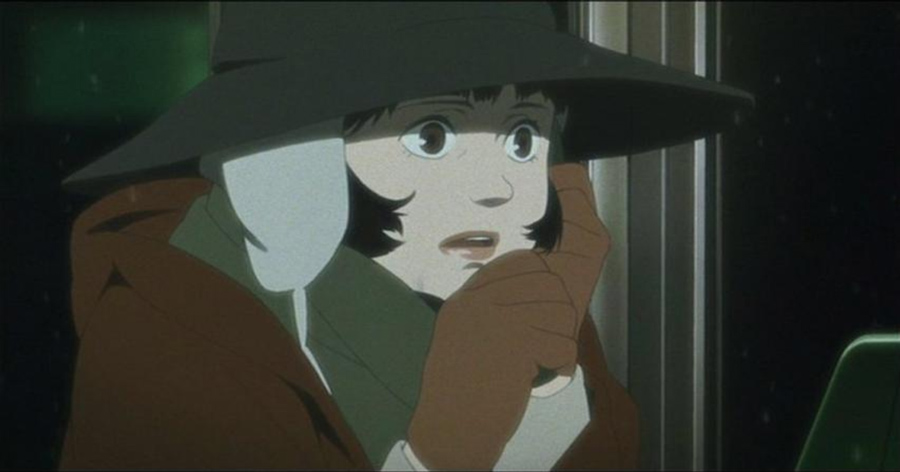
Our first character is Miyuki, the youngest of the trio and a fugitive running from her family. The reason for her self-imposed exile is first unclear, but as she develops as a character, we learn more about her previously sheltered life. The arc she goes through is all about coming to terms with what she’s done and how her leaving has impacted her family.
Hana
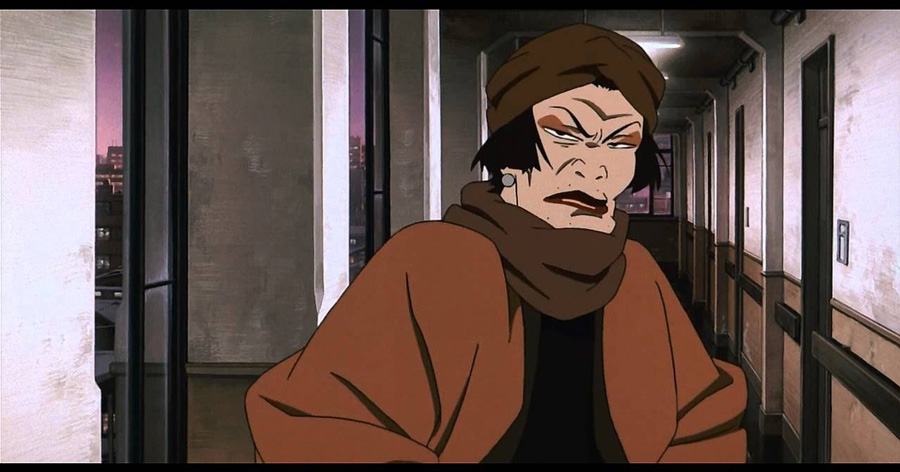
The second godfather is Hana, a Trans girl and former drag queen that ends up being the mother figure of the story. She is not only the most energetic of the three, but is also the funniest and most nuanced character of them. She seems at first as delusional, embarking on the adventure just for the whim of being a mother, but as the story progresses she becomes the voice of reason and the one that ultimately shows the most affection for her homeless comrades.
Gin
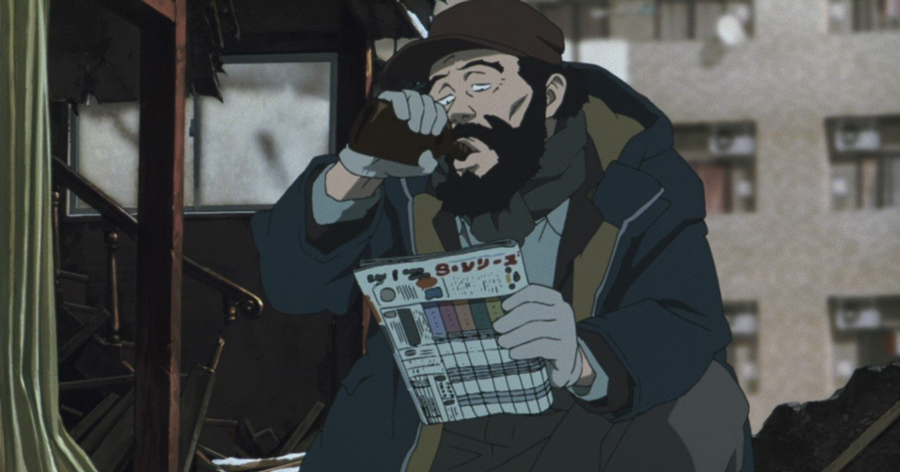
The last one is Gin, an alcoholic that according to himself was one a famous cyclist and due to injuries and alcohol ended up in there. The movie gives us plenty of indicators that he is not telling us the actual truth of what happened to him and his family, all culminating in a moment that I won’t spoil here but ends up being an emotional punch.
Taking advantage of the medium
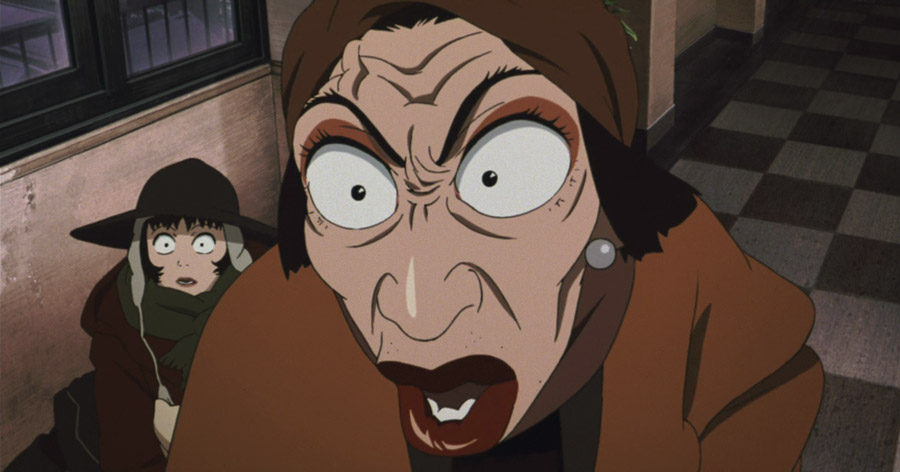
Tokyo Godfathers is one of the most genuinely funny movies I have ever seen, and most of it is accomplished by animation alone. Don’t get me wrong, the script and the previously mentioned delivery makes every joke stand out, but it is with the animation that they stick in your head. The film is largely influenced by American cartoons, with the animation echoing the fluidity and slapstick hilarity of looney-toons or the early days of hand-drawn visuals. It is both amusing and jaw-dropping, since it is a technological wonder how they make the characters seem so distinct.
Of course, it is not all laughs in the movie. The animation also makes the emotional scenes feel even more powerful. Satoshi Kon has never been afraid to explore a diverse range of emotion in animation, so when the movement is in service of something more akin to human tragedy, it delivers.
The way the characters move, from simple mouth movements, to the more complex character actions scenes, is all in service of developing the character’s personality. Small details like the way certain characters’ chins pop up during scenes where they want to show themselves as more authoritative, or the way the faces shiver when they’re crying, make the experience feel real. The animation is done so well that you can tell a character’s entire personality just by looking at them from a couple of frames.
Legendary video game composer Keiichi Zuzuki, most well known for his work in the Mother and Earthbound series, was brought in to compose the film score. The result is a soundtrack that captures the tone of the film in a unique way. The song aimed to encapsulate both the setting of low class Japan, and the emotional adventure the characters embark in, and they succeeded.
It has thirty-eight tracks in total, all of them with a distinctive feel, perfectly designed for the scenes they were made of. Personal highlights are the songs: No 9, which samples and remakes Beethoven’s nine symphony, and also the title track Tokyo Godfathers, which has an upbeat energy which captures the tone of the film’s fantastically.
A Christmas film

Satoshi Kon and screenwriter Keiko Nobumoto said that they wanted to make the story as simple as possible, and it shows. The way scenes flow between one another seem like complete accidents and something that could only be described as “the magic of Christmas”. Our protagonist bumps into major characters randomly, they end up winning the lottery without realizing it, moments of high intensity get solved by random deus ex-machina. Things that would be upsetting for viewers if not for the fact that the movie is very self-conscious, and is more focused on tone and presentation than it is in making sense. I would even argue that this not only makes the movie funnier, but more like other Christmas stories out there.
On that note, I wouldn’t call Tokyo Godfathers a children’s movie, but I wouldn’t call it an adult film either. It is a movie that tackles some very serious topics, but is also one that does so in a very comedic way, making the overall experience feel like something akin to the whole family. It is such an enjoyable film that I think every single audience member will find something to like about it.
Christmas Eve
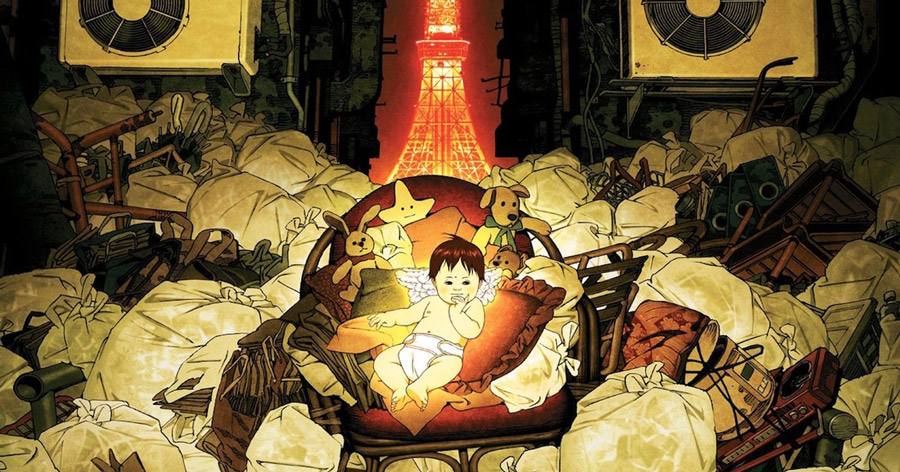
Tokyo Godfathers is an animated delight. In its very simple narrative and story structure, it has all the elements that build a compelling narrative, while also showing a mastery in the craft of animation.
It is Satoshi Kon at his most attentive and meditative state, as he uses the medium of animation to bring us something that is only really possible in it. Even if the same story could be easily told in live action, it wouldn’t be the same.












































